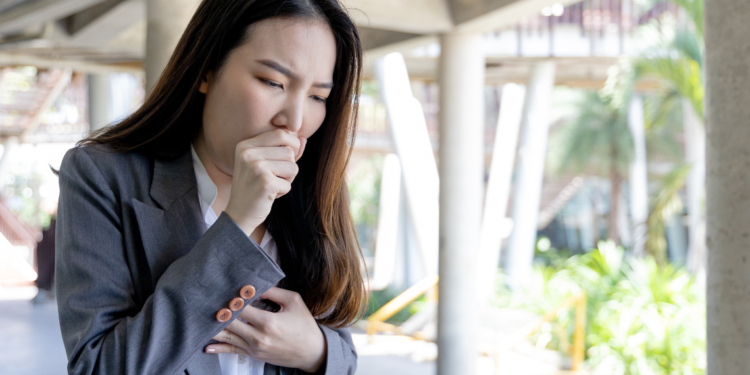Introduction
If you’re going to be spending time at high altitudes. It’s important to be aware of the potential for reverse altitude sickness. This condition can be just as debilitating as regular altitude sickness. It often goes undiagnosed because people are unaware that it exists.
Reverse altitude sickness occurs. When someone who is accustomed to living at high altitudes comes down. To lower altitudes and experiences symptoms like headache, nausea, and fatigue. It is caused by the body’s inability to adjust to the change in altitude and can be very dangerous if it is not properly treated.
If you think you may be suffering from reverse altitude sickness, the first thing you should do is see a doctor. There is no one-size-fits-all solution to this condition, but there are a few things that can be done to help people adjust to lower altitudes and avoid the worst of the symptoms. Keep reading to learn more about reverse sickness and how to acclimatize to higher altitudes. It is a normal response of the body to reduced oxygen levels at high altitudes. The body responds by increasing the heart rate and respiration to maintain oxygen levels in the blood. The process of Reverse Altitude Sickness can take a few days to a couple of weeks. The time it takes to adjust to the altitude depends on the individual and the height of the altitude.
How Does the Body React To Higher Altitudes sickness?
It can lead to a condition called “reverse altitude sickness” from ascending rapidly to higher altitudes at quickly. The body undergoes changes when you ascend higher in altitude. Including the size and concentration of gases, oxygen levels in the blood stream, and fluid in different body compartments. This change leads to related medical issues. That is also not uncommon at higher altitudes such as cabin air syndrome or hypoxia (low oxygen level).
This was the introduction of the given section topic and keywords – “How Does the Body React To Higher Altitude Sickness?”
Causes of reverse altitude sickness
The reason for this is naturally called reverse altitude sickness. It’s among one of the causes of why an individual getting sickness.
The number one cause of sickness. In humans at high altitudes is because our body lacks oxygen when we’re at higher geographical locations. This can also mean an increase in CO2 as well as low air pressure, which speeds up our heart rate while decreasing blood flow and cuts off circulation throughout to the brain which could lead to dizziness, symptoms of stroke and eventually death.
Symptoms of reverse altitude sickness
The common symptoms of reverse altitude sickness are headaches and nausea. The sufferer may feel a throbbing sensation on the temples or feel nauseated, which can lead to vomiting.
One of the more noticeable signs of sickness often manifests as nausea and vomiting. Some alternatives to traditional cures like saltines, ginger candy, ginger fortified water, or boiled coffee have made some inroads to providing relief from these stomach upsets Finally, even though there is no known “cure” for this condition you can try getting someone else’s perspective.
Symptomatic relief can be obtained via medications like dimenhidramine HCl, which are traditionally used for treatment for altitude sickness; however these medicines have not been potent enough in treating the nausea and vomiting associated with reverse symptoms meaning patients must keep taking them throughout each day until the discomfort subsides while they eventually start hiking back up to lower altitudes.”
How to acclimatize to higher altitudes
While the bodies need to acclimatize to higher altitudes over a prolonged period of time, this cannot replace the urgent need for passengers or trekkers who have what is referred as Acute mountain sickness.
Contrary to popular belief and the movies. Going downhill does not help in speeding up acclimatization to higher altitude and will only aggravate it. Up high, our lungs are working hard which means we can’t get enough air – our Sherpa heart needs to beat just a little faster. The common misconception is climbers go downhill during acclimatization, like they say in “Into Thin Air” when Scott Fischer puts his group on a 17-hour rotation: one up during the day, two down at night while they sleep. But that plan would have potentially killed them by morning lightening their load on ascent too quickly.
Tips for avoiding reverse altitude sickness
Applying the following tips will ensure you avoid being afflicted by reverse altitude sickness.
Every day while ascending, acclimatize yourself to variable levels of elevation gains. Basically don’t spend all your time in one geographical region, which increases the risk of developing a physiologic adaptation.
Decrease altitude by 400-500 meters no more than twice a day with breaks however to restore carbon dioxide content in body tissues and blood after decreasing below 1500 meters high.
Upon reaching higher altitudes, also keep in mind that less oxygen is available so increase your time incrementally so as not to have severe headache and tiredness.
When to see a doctor for reverse altitude sickness
A person should see a doctor if they have any of these symptoms, but it can be hard to differentiate between the two from unknown alpine villages. The symptoms for reverse altitude sickness are, lack of appetite and a headache. They both can be due to altitude sickness.
People find the quickest ways found to get back up the mountain like drinking more water or tea with salt because they are being influenced by gravity and people often misconstrue it as tiredness. The altitude change should be slower so that air headiness could catch up.
Conclusion
In conclusion, it is important to acclimatize to higher altitudes slowly and carefully in order to avoid reverse altitude sickness. Make sure to drink plenty of fluids and stay hydrated. If you experience any symptoms of reverse altitude sickness, descend to a lower altitude immediately and seek medical help. Reverse altitude sickness is a real phenomenon that can occur when somebody moves from a higher altitude to a lower altitude too quickly. If you experience any symptoms of reverse altitude sickness, it is important to seek medical attention immediately.






